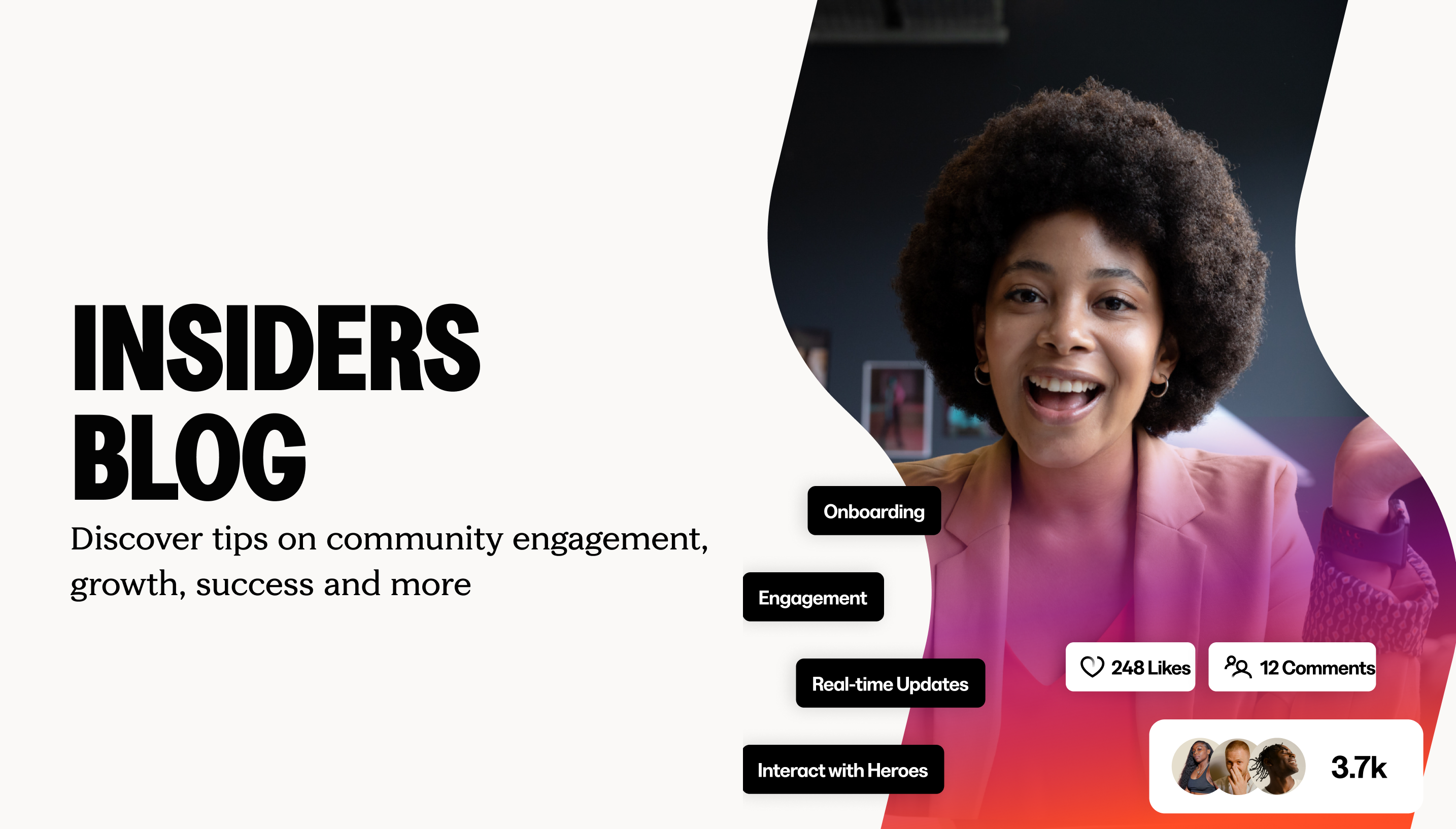
Onboarding Made Easy: A Step-by-Step Guide for Online Communities
Jun 06, 2024Have you ever attended a party at someone's house and walked in without knowing what to do? You step inside, see groups of people chatting, and hear music playing, but no one introduces themselves or lets you know where the bathroom is. You hesitate—should you grab a drink? Where should you sit? Who should you talk to first? That awkward feeling can make you second-guess why you even came in the first place.
In an online community, a strong onboarding process eliminates that uncertainty. It provides a clear roadmap for new members, showing them where to start, what to expect, and how to engage effectively. Without it, members may feel overwhelmed or disengaged before they have the chance to experience the full value of the community.
Meet the experts who have mastered the art of community building: Collette, the Kajabi Communities Program Manager, renowned for helping countless communities create seamless onboarding experiences; Sue, a dedicated Kajabi Expert with a passion for cultivating deep connections; and Courtney, a community expert in crafting welcoming environments that make members feel valued from day one. Their combined experience provides actionable insights to help design an onboarding experience that ensures long-term member success. With their combined experience, this guide will help craft an onboarding experience that sets members up for long-term success.
Why Onboarding Matters
Onboarding plays a big role in shaping the overall community experience. A well-structured process:
- Creates a positive first impression by making new members feel at home.
- Encourages active participation by providing clear guidance.
- Increases retention by fostering a sense of belonging.
- Reduces support inquiries by answering common questions upfront.
- Strengthens the community by building connections early on.
Think of onboarding as inviting someone into a new space—showing them around, introducing them to key areas, and ensuring they feel comfortable.
"Creating a really well-rounded onboarding flow will hit all of these points—enhancing the user experience, building a strong foundation, boosting retention rates, reducing the support load, and strengthening community ties." – Collette
Key Elements of Successful Onboarding
1. Technical and Logistical Understanding
New members should know how to easily access and navigate the community. This includes:
- Logging in and out without issues.
- Finding support if they need help.
- Exploring key features such as challenges, meetups, and discussions.
"Most people will be using this platform for the first time, so guiding them through the basics step-by-step is essential." – Courtney
2. Meaningful Contribution
Helping members understand how they can engage meaningfully ensures they feel valued. Encourage them to:
- Join conversations and ask questions.
- Share their own experiences and insights.
- Participate in events and challenges.
"Encouraging members to share their experiences early helps them feel connected and valued." – Sue
3. Habit Building for Engagement
Building regular engagement habits is essential for keeping members involved long-term. Small, consistent actions help members stay connected and make community participation a natural part of their daily routine.
"Just like moving into a new house, it takes time to get comfortable and develop a routine in a community." – Courtney
To encourage habit formation, consider these effective strategies:
- Utilize familiar tools such as email reminders and push notifications.
- Send onboarding emails that guide members through small, manageable actions.
- Provide gentle nudges to encourage consistent participation.
Pro Tip: Leverage communication channels that members already check daily to help them seamlessly integrate community engagement into their routines.
- Email for step-by-step guidance.
- A dedicated onboarding page.
- Welcome videos or guides.
- Onboarding challenges for hands-on learning.
- Live Q&A calls to answer questions.
Tip: Stick to 1-3 channels to avoid overwhelming members.
Step 2: Set a Consistent Cadence
Define how often members should check in and build the community into their routine. Ensure your communication cadence reflects this:
- Daily check-ins: Encourage quick engagement.
- Weekly check-ins: Allow flexibility for busy schedules.
Step 3: Identify Key Milestones
Guide members through key milestones to ensure they are fully onboarded:
- Completing their profile.
- Joining a challenge.
- Downloading the community app.
- Posting in an introductory discussion.
- Attending a meetup.
Tip: Start with the easiest tasks to build confidence and momentum.
"Structuring onboarding from easiest to hardest lets members build momentum and feel confident as they progress." – Collette
Helpful Tips for an Effective Onboarding Experience
- Start simple and build up:
- Provide easy wins first to encourage progress.
- Use clear instructions:
- Offer step-by-step guidance to avoid confusion.
- Use progressive disclosure:
- Users don’t need to know everything at once.
- Repeat key information:
- Reinforce important details in different formats.
- Encourage social interaction:
- Foster connections through introductions and group activities.
Just like a well-hosted party leaves guests feeling happy and connected, a well-structured onboarding process ensures new members feel welcomed, valued, and excited to participate. By providing clear guidance, fostering engagement, and making the experience enjoyable, members will feel right at home from day one.
Keeping Members Engaged After Onboarding
Onboarding is just the first step in fostering a thriving community. Long-term engagement depends on creating connections, providing ongoing value, and encouraging consistent participation.
A strong sense of belonging helps members stay engaged. Personal welcome messages, shoutouts, and conversation prompts make members feel seen and motivated to participate. Regular live Q&A sessions, webinars, and exclusive content keep members coming back.
Encouraging participation through email digests, reminders, and interactive events—like virtual meetups and networking sessions—keeps engagement high. Gathering feedback through surveys and discussions ensures the community remains dynamic and responsive to members' needs.
By prioritizing these strategies, communities can build lasting engagement and make members feel valued and excited to participate.
For more insights on fostering lasting engagement, check out Unpacking Community Engagement article.

